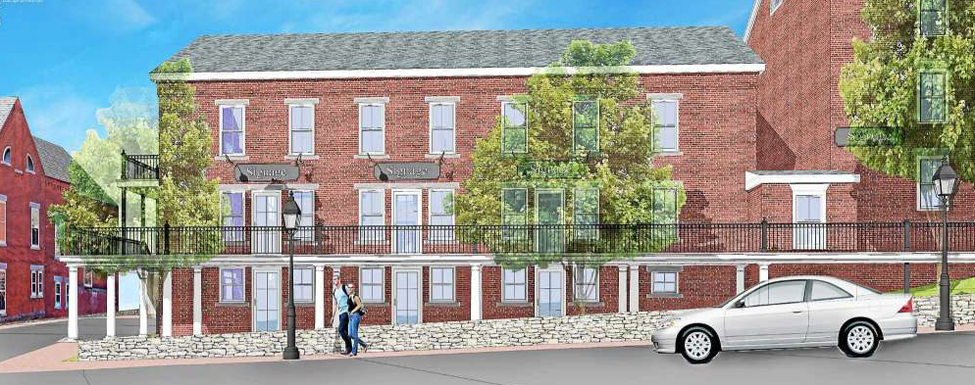Jail Time in Litchfield
Years ago, when I first moved to Greenwich Village, The Women’s House of Detention was still in operation and was something of a tourist sight. People would gather to see women screaming from inside the prison at their husbands, boyfriends, and children who were standing below.
And then I moved to Litchfield in 1996, only to discover that smack in the center of the Green was the Litchfield Jail. By that time, it was known as McAuliffe Manor (a rather highbrow name) and was a halfway house for women. In 2008, it was vacated and sat uninhabited—and uncared for—until last August.
The state was anxious to see the building put to use (and taken off the books) and offered it to the town, which turned down the opportunity. While many people looked at the jail, no one came up with an offer until Russell Barton stepped forward.
Barton, who has a track record in several nearby towns for turning around beleaguered commercial properties, purchased the jail for $130,000. With life partner Susi Stone and business partners Harriet Saltzman and Bob Meyers, he began formulating plans and designs. Well aware of the borough’s restrictions on historic properties, Barton followed all the rules and regulations. The process began soon after the purchase and the original plans were presented to the Historic District Commission and went through countless renovations and adjustments before being approved.
“It was a real challenge,” explains Barton. “The walls were incredibly thick and there were the cells themselves to deal with and there was more demolition than we originally envisioned. We had to replace all the windows but retained the bars at the request of the Historic District Commission.”
There was no historical significance to the bars, but one of the members of the commission recalled that a similar restoration of a Boston jail had been done with the original barred windows intact—and so Barton followed suit.)
In addition, there was the challenge of adding an outside walkway and railings to make the shops accessible from the street.
Barton’s changes have made the jail a viable commercial property but, of course, its history cannot be erased. Built in 1812, it is the oldest public building in Litchfield and one of the oldest penal facilities in the state. During the war of that year British prisoners were incarcerated there. A cellblock was added in 1846 and another three-story wing with additional cells was erected in 1900.
In 1992, the building became a drug treatment center for the 30 men serving prison sentences. Ironically, the jail shares a common wall with a branch of Union Savings Bank. That occurred in 1816 when the First National Bank of Litchfield was built adjacent to the prison. In 1994 the First National Bank opened a branch there and built an addition that connects the two buildings, making it the only financial institution to share a common wall with a jail.
Now, the red brick facade has been painted slate gray with white trim. The addition that faces West Street is pale yellow and the property has been properly landscaped.
“We’ve carried out all the Historic District Commission's requests,” says Barton, “and we want the redefined jail to complement the rest of the buildings on the green.”
The main part of the floor facing North Street has been outfitted to house a restaurant and bar and a coffee shop. There has been much interest but, as yet, nothing has been finalized.
Several of the shops facing West Street are open: Luna, a women’s clothing and accessories shop has been doing a brisk business. The Bake Shop has arrived, as has April’s Hairdressing salon on the second floor. Also open for business on that level is Lulu The Face Co., featuring cosmetics and beauty products by Linda Temkin.
The transformation of the top floors illustrates Barton’s creative vision. He has turned the fourth floor into one large loft rental apartment. The 3,000-square-foot space features a spacious living room with fireplaces at each end; top of the line kitchen appliances, washer and dryer, three bedrooms and two baths with distinguished fixtures. The floor below has three smaller apartments, all appointed with the finest features. Renters will also have the use of garage space.
It is still a work in progress until all of the spaces are filled. But Barton is confident that it will all be occupied shortly after the New Year. The Litchfield Jail is a prime example of repurposing a challenging building and making it viable again. And it is a testament to Barton’s ability and commitment to saving historic properties.


